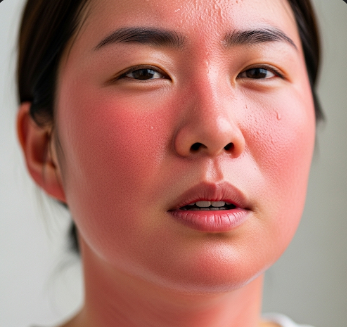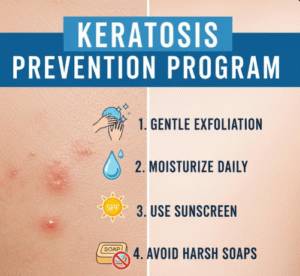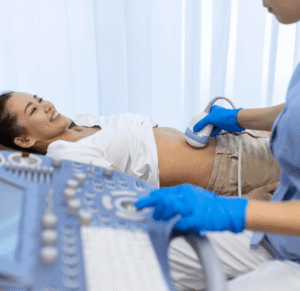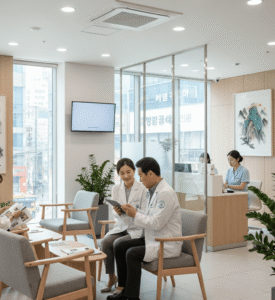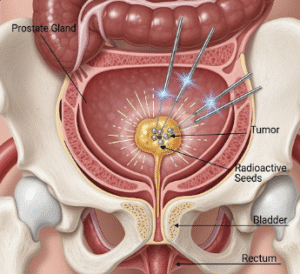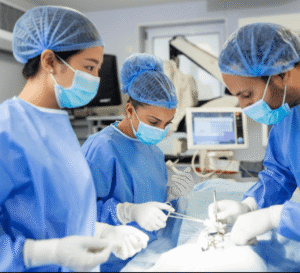➤ Overview
Skin flushing is a sudden reddening of the skin, typically on the face, neck, or upper chest, caused by increased blood flow in superficial blood vessels. It may occur occasionally in healthy individuals due to emotional triggers, temperature changes, or physical exertion, but frequent or persistent flushing can signal underlying medical conditions.
In South Korea, dermatologists, internal medicine specialists, and allergists evaluate skin flushing to determine whether it is benign or related to systemic issues. Treatment strategies range from lifestyle modifications to advanced medical and cosmetic interventions, depending on the underlying cause.
➤ Key Facts
→ Skin flushing often affects the face, neck, and chest, but can spread to other areas.
→ It may be temporary or chronic, mild or intense.
→ Common triggers include emotional stress, hot beverages, spicy foods, alcohol, or heat exposure.
→ Persistent flushing can be associated with rosacea, menopause, infections, or systemic conditions.
→ In Korea, both clinical evaluation and cosmetic therapies are available for management.
→ Flushing may be accompanied by warmth, burning, or tingling sensations.
→ Early assessment helps identify serious underlying causes such as endocrine or cardiovascular disorders.
➤ What is Skin Flushing?
Skin flushing occurs when blood vessels in the dermis dilate, increasing blood flow and producing visible redness. While often benign and transient, chronic or recurrent flushing may indicate conditions such as:
→ Rosacea – Chronic inflammatory skin condition causing persistent facial redness.
→ Hormonal changes – Menopause or thyroid disorders leading to vasomotor instability.
→ Medications – Certain drugs like vasodilators or niacin can induce flushing.
→ Systemic diseases – Infections, autoimmune disorders, or carcinoid syndrome.
Korean healthcare providers evaluate flushing by considering triggers, associated symptoms, and patient history, allowing accurate diagnosis and tailored treatment plans.
➤ What Symptoms are Related to Skin Flushing?
Skin flushing may present with several accompanying symptoms:
→ Sudden redness of the face, neck, or upper chest.
→ Warmth or heat sensation in the flushed areas.
→ Burning or tingling sensation on the skin.
→ Visible swelling in some cases.
→ Sweating or perspiration during episodes.
→ Heart palpitations or mild dizziness when flushing is severe.
→ Associated with emotional triggers such as embarrassment, anxiety, or stress.
→ Chronic conditions may lead to persistent redness, visible blood vessels, or skin thickening.
➤ What Causes / Possible Causes?
Skin flushing can result from physiological, environmental, or pathological factors:
→ Emotional triggers – Stress, embarrassment, or anxiety.
→ Temperature changes – Exposure to heat, cold, or sudden temperature shifts.
→ Dietary factors – Spicy foods, alcohol, caffeine, or hot beverages.
→ Medications – Niacin, vasodilators, or certain chemotherapy drugs.
→ Hormonal changes – Menopause, thyroid dysfunction, or adrenal disorders.
→ Chronic skin conditions – Rosacea or eczema.
→ Systemic diseases – Carcinoid syndrome, infections, or autoimmune disorders.
→ Environmental factors – Sun exposure, wind, or humidity changes.
➤ When Should I See My Doctor?
Medical evaluation is necessary if flushing is frequent, persistent, or associated with other concerning symptoms:
→ Flushing lasting more than a few minutes or hours.
→ Associated with chest pain, palpitations, or dizziness.
→ Flushing with swelling, itching, or breathing difficulties.
→ Sudden onset in older adults without obvious triggers.
→ Recurrent flushing that affects daily life or causes distress.
→ Accompanied by systemic symptoms such as fever, weight loss, or gastrointestinal issues.
➤ Care and Treatment
Management of skin flushing depends on the underlying cause, severity, and frequency:
→ Lifestyle modifications – Avoid triggers like spicy foods, alcohol, heat, or stress.
→ Skincare routine – Gentle cleansers, moisturizers, and sunscreen to protect sensitive skin.
→ Medications – Topical or oral agents to reduce redness and inflammation (e.g., brimonidine or beta-blockers).
→ Hormonal management – For menopause or endocrine-related flushing.
→ Behavioral therapies – Stress reduction techniques, mindfulness, and biofeedback.
→ Treatment of underlying conditions – Address infections, autoimmune diseases, or medication-induced flushing.
→ Cosmetic interventions – Laser therapy or IPL (intense pulsed light) for visible blood vessels.
➤ Treatment Options in Korea
South Korea provides comprehensive evaluation and treatment for skin flushing, integrating medical, cosmetic, and lifestyle approaches:
Diagnosis in Korea
→ Detailed clinical assessment by dermatologists or internal medicine specialists.
→ Blood tests and hormone panels to identify systemic or endocrine causes.
→ Imaging or specialized tests for rare conditions like carcinoid syndrome.
Medical Treatments in Korea
→ Prescription topical or oral medications to reduce redness and inflammation.
→ Hormone therapy for menopausal or endocrine-related flushing.
→ Treatment for associated conditions such as rosacea, infections, or thyroid disorders.
Advanced Therapies in Korea
→ Laser therapy or IPL to target persistent redness or dilated blood vessels.
→ Cosmetic dermatology procedures to improve skin texture and appearance.
→ Integrative approaches combining Western medicine and dermatologic wellness practices.
Rehabilitation & Support in Korea
→ Education on trigger avoidance and skincare routines.
→ Follow-up for long-term monitoring and management.
→ Support for psychological impact if flushing affects confidence or social life.

